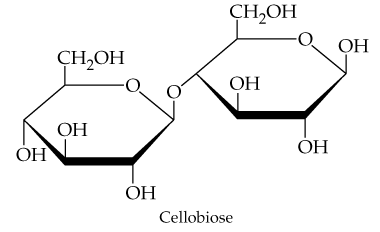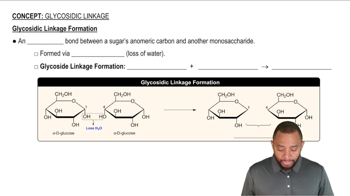Identify the following reactions as condensation or hydrolysis:
(a) two monosaccharides reacting to form a disaccharide

 Verified step by step guidance
Verified step by step guidance Verified video answer for a similar problem:
Verified video answer for a similar problem:


 1:44m
1:44mMaster Glycosidic Linkage Formation Concept 1 with a bite sized video explanation from Jules
Start learning